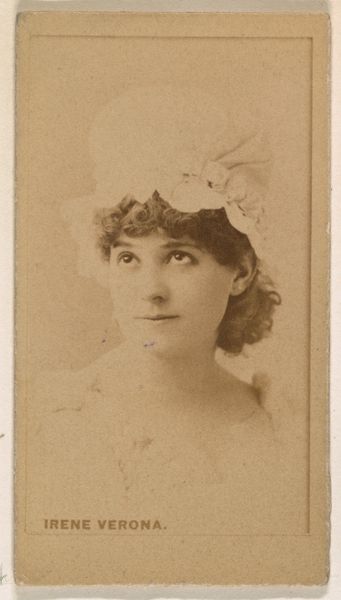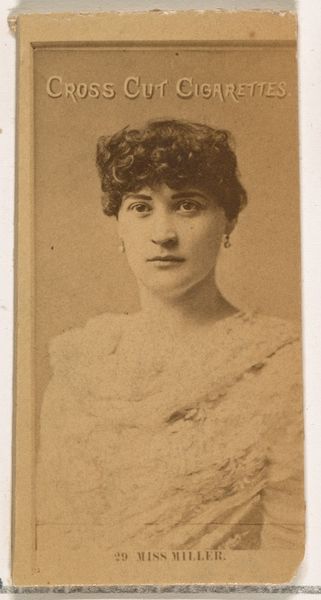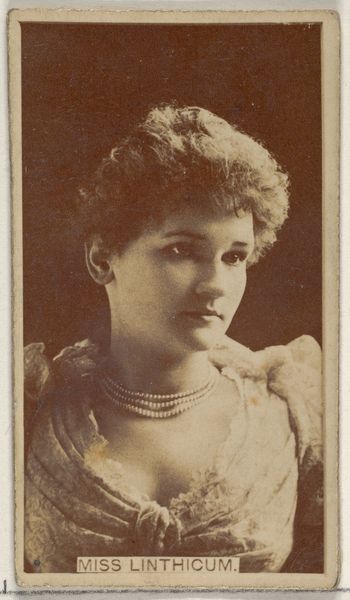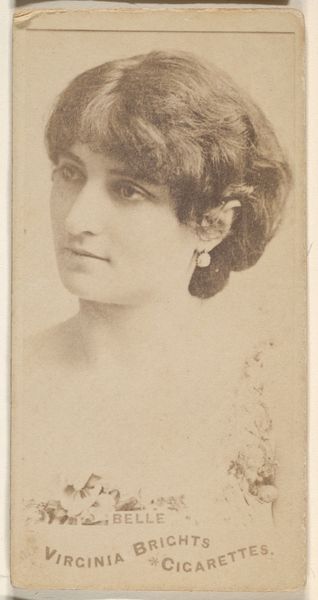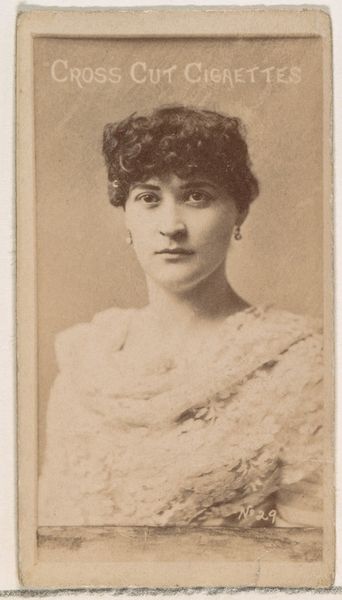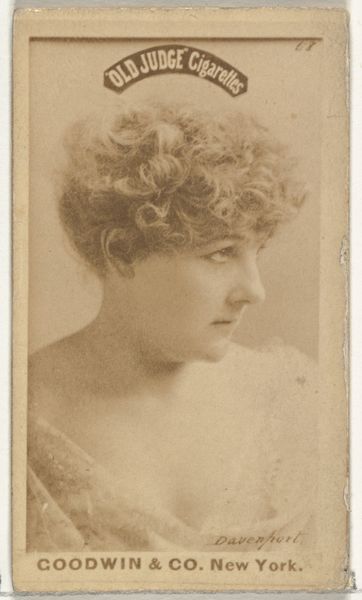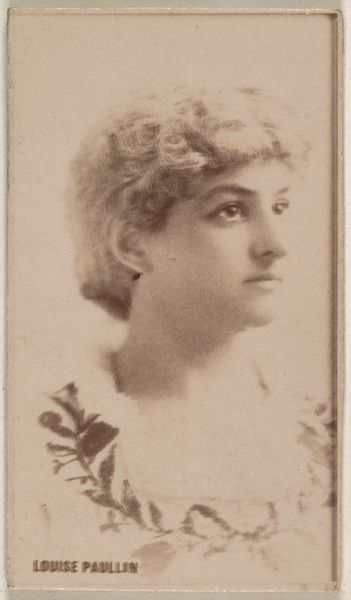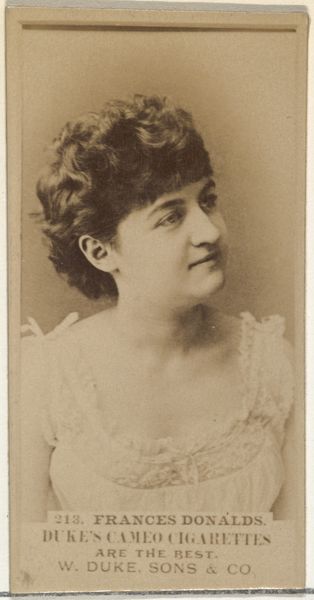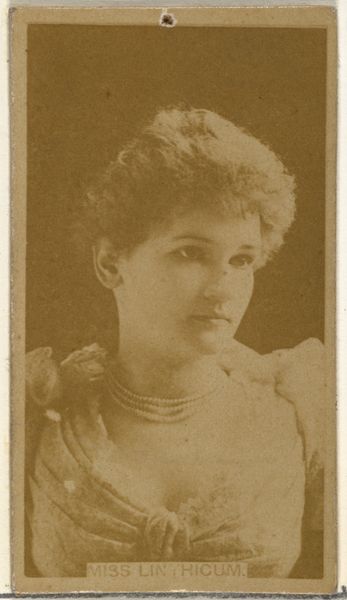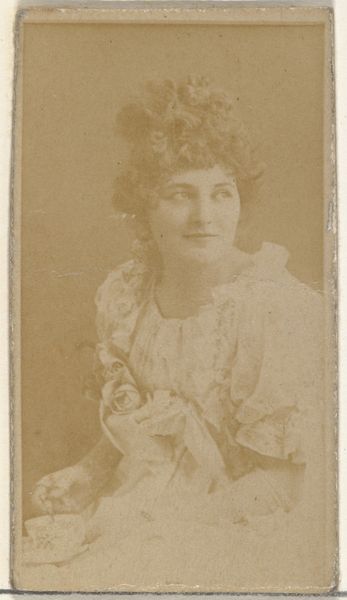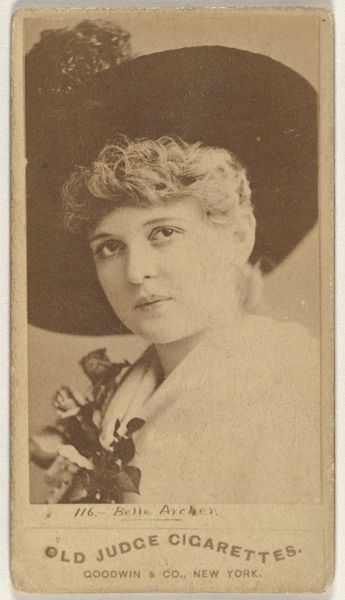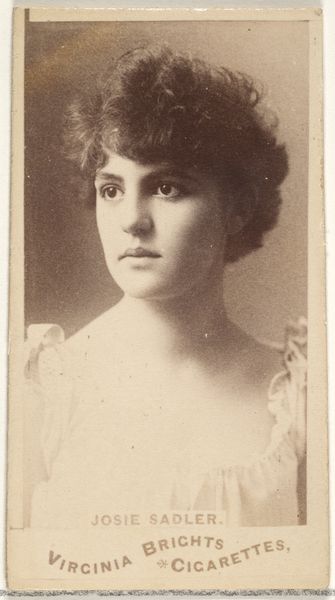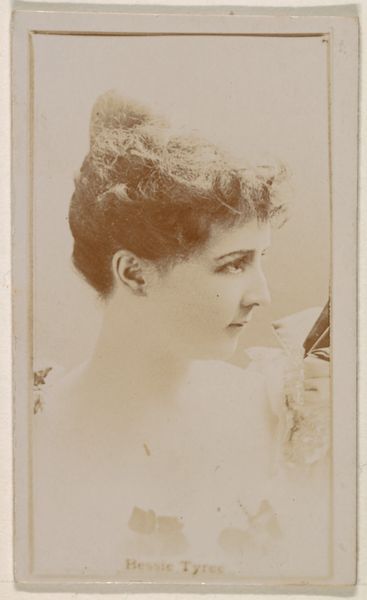
Estella Clayton, from the Actors and Actresses series (N145-8) issued by Duke Sons & Co. to promote Duke Cigarettes 1890 - 1895
0:00
0:00
print, photography, albumen-print
#
portrait
# print
#
photography
#
albumen-print
Dimensions: Sheet: 2 11/16 × 1 3/8 in. (6.8 × 3.5 cm)
Copyright: Public Domain
Editor: This albumen print from around 1890 is titled "Estella Clayton, from the Actors and Actresses series," by W. Duke, Sons & Co., part of a Duke Cigarettes promotion. The sepia tone gives it such a wistful, romantic air. What stands out to you about it? Curator: The immediate appeal is, of course, the gaze. Where is it directed? Is it hope, resignation, longing? It carries the weight of countless women who found themselves, quite literally, framed within specific roles, both on the stage and off. Think of what an actress symbolized during this era, both the aspirations and societal limitations placed upon women. Editor: It's interesting how the print, being an advertisement, also plays into that image, selling both a product and an ideal. Curator: Exactly. The photograph is not just of a woman, but a commodity. She embodies an aspirational figure tied to leisure, beauty, and perhaps even transgression, depending on societal views of actresses. What symbols can you decipher in her clothing or adornments? Do they tell you about her role? Editor: Well, the dress seems somewhat simple, suggesting perhaps a "girl next door" image to broaden appeal? Curator: Possibly. The floral details also speaks of idealized femininity, carefully constructed for consumption. Editor: I hadn't considered the floral detail as a construct. So, it becomes more than just a pretty picture but a deliberate statement of cultural values. Curator: Precisely! Recognizing the symbols reveals the deeper narratives at play. That's what makes decoding these seemingly simple images so rewarding. Editor: It really makes you think about what it meant to be a woman at that time and how that meaning was crafted through these images.
Comments
No comments
Be the first to comment and join the conversation on the ultimate creative platform.
